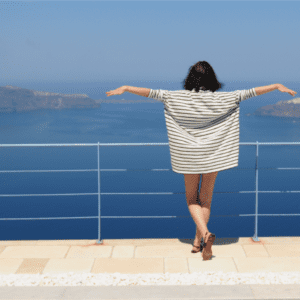
In our rapidly changing hotel environment, it is increasingly common to find two brands co-locating and sharing amenities. But how challenging is it to provide a positive guest experience at adjoining properties?
For a closer look at the experience, eHotelier interviewed Christopher Calabrese, Vice President & General Manager at both the JW Marriott Cancun Resort & Spa and the CasaMagna Marriott Cancun Resort. Christopher has now worked with these sister hotels for over 17 years. The two properties are literally connected by a walkway, yet each has a unique brand identity.
What are the greatest upsides of managing two brands in one location?
It’s particularly great for our guests because they can utilize all the food & beverage options. We have a total of nine international restaurants between the two properties. From a management perspective, it’s ideal because we manage both properties under one leadership team. We like this concept because it allows us to maximize revenue by making sure the right business ends up in the right hotel, and see that the customer leaves totally satisfied. On the groups side of things, because we control both properties, our
leadership team has a more vested interest in making sure both are managed properly.
A huge benefit of having these dual hotels is that we are the largest complex in Cancun – 900 rooms total – and all of our banquet space is beautifully designed and centralized on the same level. For large groups who want to buy both properties, sometimes they want pricing that’s a la carte for each property, other times they want a blended rate so that it’s the same across the board, and we can cater to those needs with incentive groups and different tier levels.
Another way it works to our benefit is that we can create many efficiencies for the back of house areas. While the hotels are different brands – accounting is accounting, human resources is human resources, laundry is laundry. The towels from each hotel might be different but the methodology to clean them is the same. So for certain things, these positions can be combined because they don’t impact brand standards. Other hotels operating in a competitive environment may have to make cuts across the board, whether it affects the guest experience or not.
What are the greatest challenges of managing two brands in one location?
In many ways, we want to make sure that we run the properties as two separate businesses and that we aren’t spreading ourselves too thin. Another big challenge is making sure the brand integrity remains in tact according to Marriott standards. The properties are connected by a pedestrian walkway – and once we cross that bridge, we have to put on the particular brand shirt of the hotel we are walking toward, and make sure we are setting those examples to follow brand standards.
For example, at JW Marriott we call our employees “associates,” and at CasaMagna they’re “hosts.” When a guest asks us for directions at CasaMagna, we accompany them for three steps; at JW, we escort them to their destination. It’s important that we’re driving through the brand voice through every aspect of the building.
When we’re selling group business, having two hotels in one location can become a disadvantage when a potential customer wants the offerings of JW, but isn’t willing to spend the incremental cost per room, so they decide to go with a CasaMagna competitor. We’re trying to qualify our group customers and conduct more research about what they’re all about, what they’re willing to spend, and what sensitivities exist. In some cases, it may not be worth it to inform them about JW when it isn’t within their budget.
Staffing – Do you have separate training programs for each? Do they intermingle, either socially or in a work capacity?
Yes, the training is separate. When someone comes to the JW, they’re expecting a different level of service than they would at a Marriott resort. Before our employees even hit the floor, they’ve already had one week of mandatory training. They go through a beautiful orientation program that takes them through the history of the company. Each of the executives are there, including myself — we get up and talk about ourselves, intermingle with them, give them time to ask us questions, so that they can see us as human beings with personalities and understand who they’re working for.
Initially, the new employees for both properties start out together as they learn about the basic rules and regulations and room standards. Then they branch out and undergo specific training for their branded hotel, which we call “In the Beginning.” Six months later, we provide additional reinforcement with a training called “Chapter 2.”
As far as movement between the properties – this definitely exists. Employees crossover at many different levels to seek promotions once they learn the training in a specific job. In the banquets department specifically, because our properties together have over 80,000 square feet of event space, employees are cross-trained in both brands to staff these large parties.
During low season in September, we usually shut down a cafeteria in one of the hotels, so our employees end up eating all in one place. We provide free transportation for both brands to downtown, but it’s one service, so everyone’s together on the same bus.
We have a celebration every year for our employees called Associates Appreciation Week to celebrate and thank them for their hard work. This year, we started off with two days of Olympics on the beach with various games, and our employees get together and form teams. We had a carnival out on the terrace, spa treatments, a movie night with popcorn and food, a special breakfast, a gala dinner and dance – F&B is heavily tied into all aspects of the celebration.
Do you share suppliers for both properties to drive better pricing structures?
At Marriott we have what we call a Business Council comprised of all the hotels and franchises, and we work together to maintain low pricing — not to put pressure on vendors, but to create buying power. Locally, we work together in some degrees with some of our neighboring hotels like The Ritz Carlton to drive prices down. On the other hand, there are specific quality levels that might be superseded by the JW, so we might buy separately. By and large we are using common vendors, because they can make those differences as well with things that might be required by the different brands.
Where are the best opportunities to leverage economies of scale?
Purchasing rights. The more you buy, the more you can drive your unit cost down. I see that as a big plus. On the labor side, during the slower times, we combine laundries, combine cafeterias, and share basic food ingredients before they’re prepared.
A great example is when Marriott acquired Gaylord Hotels. A hotel with 3,200 rooms had 25 or 30 different kitchens, so they had added labor costs for menial tasks and no efficiency of scale in place. We came in and created one central commissary kitchen for basic food preparation – tomatoes, onions and ingredients that can then be deployed to the specialty chefs. Preparation may be different, but the basic items needed to prepare many dishes can be ordered together to be more efficient.
Is customer service different for each property at the shared amenities? How do you communicate differing brand standards to satisfy customer expectations?
The amenities at each location are brand specific. For bathroom amenities, towels are a different length and size; standard sizes for guest rooms vary; the JW has a four-fixture bath. While the properties do share many offerings, some things are off limits because the standards are very different. CasaMagna guests cannot use the JW pool, because of this difference in standards. The quality of lounge chairs are upgraded, there are more servers per guest, and the menu is upgraded and at a higher price point. At CasaMagna, the guest retrieves their own towel from the towel hut. At JW, the pool attendants will escort the guest to a chair, lay their towel out, and offer to make reservations for them – like a poolside concierge.
Can you leverage competition between the two hotels to drive better performance in each, or is that dangerous?
It’s not dangerous. That is certainly a valid question: who gets what, who is going where, but I would change the question a little bit to how each hotel has to compete within its own competitive set from a strategy standpoint, to drive those results up and perform year after year.
For JW that’s the Grand Fiesta Americana Coral Beach; for CasaMagna that’s The Westin and a couple others. The only time this competition between our two properties comes into play is with groups, and determining what we are doing for large groups who want to utilize both properties.















